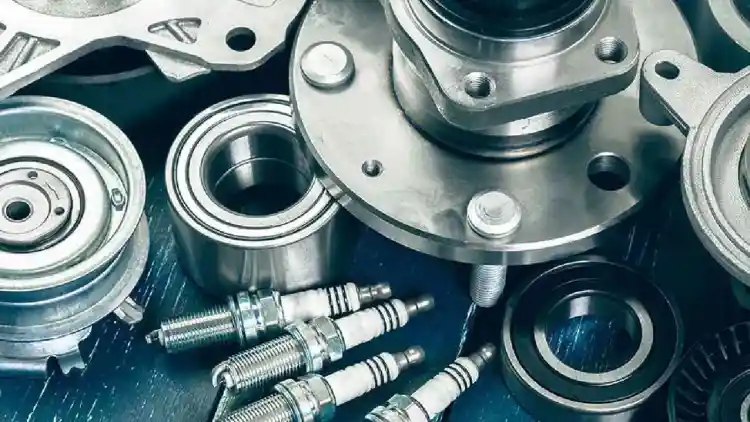- What is VTC 2003?
- How VTC Systems Work
- Common Problems with VTC in 2003 Cars
- Maintaining Your Older Car with VTC
- FAQ
The vtc 2003 system revolutionized engine efficiency, performance, and emissions. Learn how it works, its benefits, and how to fix common issues.

What is VTC 2003?
VTC, or Variable Timing Control, is a clever system that optimizes the timing of engine valves based on driving conditions. For cars manufactured around 2003, this feature was revolutionary, offering enhanced fuel efficiency and smoother operation. It adapted to a driver’s demands, whether accelerating on highways or navigating tight city streets.
Understanding Variable Timing Control
Variable Timing Control allows a vehicle's engine to adjust its valve timing dynamically. By doing so, it precisely controls the flow of air and fuel into the engine’s combustion chamber. In simpler terms, VTC adjusts the 'breathing' of your car’s engine to ensure it performs well under different conditions.
Why It Was Popular in 2003
In 2003, automotive companies competed to make vehicles more fuel-efficient and environmentally friendly. VTC emerged as a solution for improving engine performance while maintaining lower emissions. Drivers during that time appreciated features that enhanced driving pleasure without compromising affordability.

How VTC Systems Work
Variable Timing Control systems work hand-in-hand with a car’s onboard computer, which constantly monitors driving conditions. Using advanced sensors, it adjusts internal components to alter the timing of the engine valves.
Basic Steps of VTC Operation
Step 1: Sensors collect data about engine speed, temperature, and load.
Step 2: The car’s computer processes this information.
Step 3: Timed adjustments occur automatically, opening and closing valves as required.
This precision ensures the engine works efficiently under varying conditions, offering a smooth and responsive drive.
Benefits for Engine Performance
Vehicles equipped with VTC technology gained several advantages, such as:
Improved Fuel Efficiency: Drivers could enjoy more miles per gallon.
Enhanced Power Delivery: Accelerations were smoother, making city or highway driving more enjoyable.
Reduced Emissions: Cleaner exhaust reduced pollution and complied with stricter environmental regulations.

Common Problems with VTC in 2003 Cars
Though VTC systems were reliable in the early days, they are prone to wear-and-tear, particularly in older vehicles. Regular maintenance becomes crucial to avoid these common issues.
Typical Faults in VTC Systems
Drivers of 2003-model cars might encounter the following problems over time:
Rough engine idle: A shaking engine when the car is stationary.
Loss of power: Sluggish response during acceleration, especially on inclines.
Dashboard warning lights: Frequent activation of the check engine light, often linked to sensor troubles.
These issues often stem from worn-out parts, neglected oil changes, or clogged sensors.
Fixes and Maintenance Tips
If you're facing VTC-related faults, here are some practical solutions:
Clean Dirty Sensors: Using DIY sensor cleaners can often resolve minor issues.
Replace Worn Seals and Components: An experienced mechanic can refresh key parts, ensuring smooth operation.
Regular Oil Changes: It's vital for maintaining the lifeline of the system’s moving parts.
Most repairs for VTC systems are affordable, but preparing for potential costs helps. Typical part replacements may range from AED 300 - AED 1200 or SAR 300 - SAR 1200, depending on specific issues.
Maintaining Your Older Car with VTC
Owning a car with Variable Timing Control from 2003 means extra care is needed to prevent long-term costly repairs. Maintaining these systems ensures safe and efficient driving for years to come.
Essential Checks to Perform Regularly
To keep your VTC-equipped car running smoothly:
Inspect fluids, especially engine oil, every 3-6 months.
Confirm air filters and intake systems are free of debris.
Schedule a professional tune-up yearly to detect hidden faults.
Practical Advice for Extending Your Car's Life
Follow these simple, long-term tips:
Avoid aggressive driving habits, like abrupt acceleration or heavy braking.
Allow your car engine to warm up before driving, especially in cooler climates.
Discuss possible upgrades or replacements with a trusted mechanic if signs of VTC wear appear.
FAQ
Q: What cars have VTC technology?
A: Most sedans, small SUVs, and lightweight trucks from 2003 implemented VTC systems. Examples include popular models from HondaBahrain HondaEgypt HondaKSA HondaKuwait HondaOman HondaQatar HondaUAE Honda, ToyotaUAE ToyotaKSA ToyotaKuwait ToyotaQatar ToyotaOman ToyotaBahrain ToyotaEgypt Toyota, and NissanKSA NissanUAE NissanKuwait NissanOman NissanQatar NissanBahrain NissanEgypt Nissan. Check your owner's manual for specific details.
Q: How do I know if my VTC system is failing?
A: Common symptoms include a rough engine idle, sluggish acceleration, or a persistent check engine light on your dashboard. Visiting a mechanic for diagnostic testing can confirm VTC-related issues.
Q: Are repairs expensive for VTC systems?
A: Repairs vary depending on the extent of the damage. Basic cleaning or adjustments are affordable, while part replacements can cost more, especially for older cars. Budgeting for regular checkups can help reduce repair expenses over time.
Q: Can a faulty VTC system damage my car?
A: While your car remains drivable for a short period, ignoring these problems can lead to bigger engine failures. Addressing VTC issues promptly safeguards your vehicle and avoids higher costs later.
Q: How often should I service my VTC-equipped car?
A: Ideally, service intervals should occur every 6 months for basic checks, while thorough inspections are recommended annually. Regular oil changes are crucial for smoother operation.
Read More:
Ashok Leyland UAE: Trucks for Tough Jobs or Bust?












